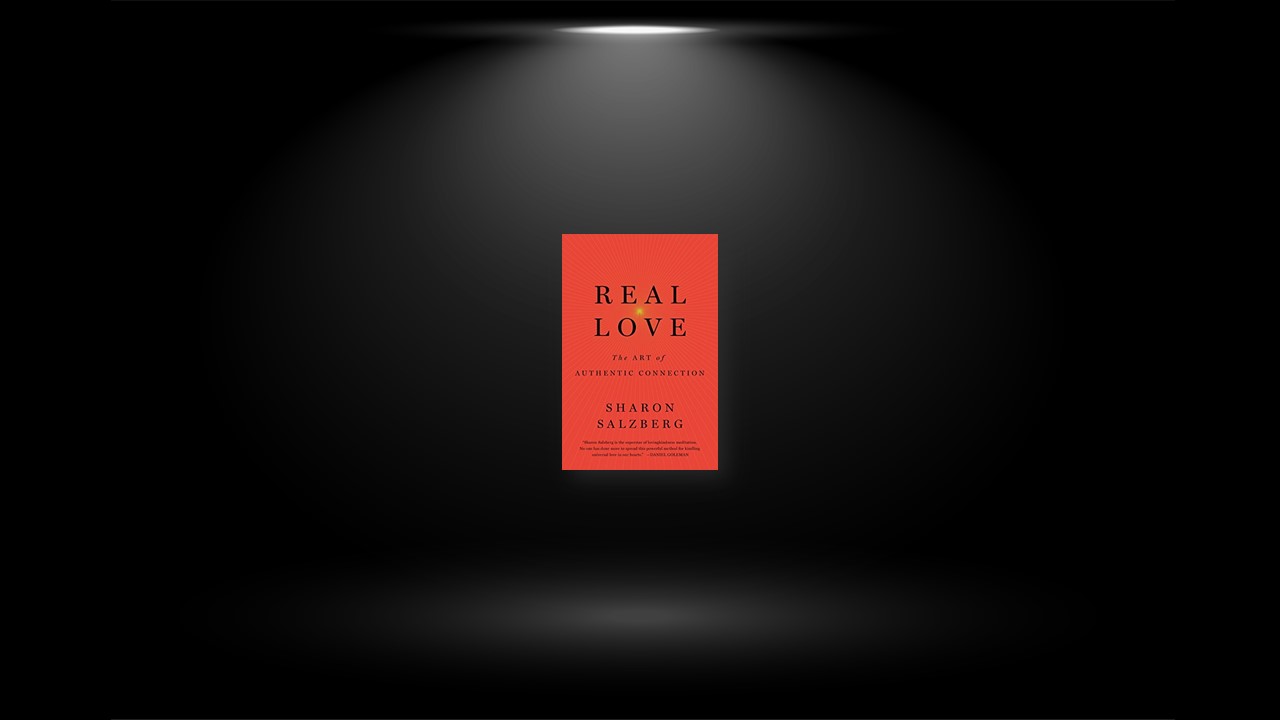The Stories We Tell Ourselves
TO TRULY LOVE ourselves, we must treat our stories with respect, but not allow them to have a stranglehold on us, so that we free our mutable present and beckoning future from the past. To truly love ourselves, we must open to our wholeness, rather than clinging to the slivers of ourselves represented by old stories. Living in a story of a limited self—to any degree—is not love.
To truly love ourselves, we must challenge our beliefs that we need to be different or inherently better in order to be worthy of love. When we contort ourselves, doggedly trying to find some way to become okay, our capacity to love shrinks, and our attempts to improve ourselves fill the space that could be filled with love.
Maybe we don’t need to correct some terrible deficiency. Maybe what we really need is to change our relationship to what is, to see who we are with the strength of a generous spirit and a wise heart. St. Augustine said, “If you are looking for something that is everywhere, you don’t need travel to get there; you need love.”
The Stories Others Tell About Us
JUST AS THE STORIES WE tell ourselves shape our experiences, so do the stories others tell about us. They can come with either a positive or a negative spin, undermine us or support us. And sometimes they aren’t even stories at all, but ideas conveyed by nonverbal signals, such as body language or facial expressions, or even by a single word or phrase: shy, withholding, generous, self-absorbed. It’s a gift when these stories lift us up. They remind us that we matter, and they reinforce real love for ourselves.
Today, with social media as a primary tool of communication, there’s more opportunity than ever before to learn what others think of us. Sometimes what we hear is positive and affirming, but too often it’s not. Internet bullying and smear campaigns spread like wildfire and can do irreparable harm: 52 percent of kids report having been bullied online, while about 20 percent of those who’ve been targeted contemplate suicide, and one in ten attempt it. Given the proliferation of cell phones and social media usage among young people (the average age for obtaining a mobile phone is between eleven and twelve), the viral spread of damaging rumors and accusations has become a disturbing social phenomenon. And of course many adults are flamed and shamed, too.
If we truly love ourselves, do we avoid sharing anything that is deeply personal, or do we publicly stand up for who we are and what we believe? What approach best reflects your care and concern for yourself?
TRY RETELLING YOUR story as a hero’s journey, where you survived hard times and failures to become the stronger and wiser person you are now. Try telling it as a series of random events over which you had no control. Then rewrite the story. How did your choices shape who you are now?
Are you living someone else’s story? What would happen if you declared independence? Are you fighting someone else’s fight? Does loyalty to that person keep you from choosing happiness now?
Does the situation bring up parts of your story? Does your story help you in the present, or does it make things harder?
Welcoming Our Emotions
Most people who come to meditation are looking for respite from what is sometimes called the “monkey mind”—the perpetual, hyperactive (and often self-destructive) whirl of thoughts and feelings everyone undergoes. But the truth is that meditation does not eradicate mental and emotional turmoil. Rather, it cultivates the space and gentleness that allow us intimacy with our experiences so that we can relate quite differently to our cascade of emotions and thoughts. That different relationship is where freedom lies.
RAIN is an acronym for a practice specifically geared to ease emotional confusion and suffering. When a negative or thorny feeling comes up, we pause, remember the four steps cued by the letters, and begin to pay attention in a new way.
R: RECOGNIZE. It is impossible to deal with an emotion—to be resilient in the face of difficulty—unless we acknowledge that we’re experiencing it. So the first step is simply to notice what is coming up. Suppose you’ve had a conversation with a friend that leaves you feeling queasy or agitated. You don’t try to push away or ignore your discomfort. Instead, you look more closely. Oh, you might say to yourself, this feels like anger. Then this might be followed quickly by another thought: And I notice I am judging myself for being angry.
A: ACKNOWLEDGE. The second step is an extension of the first—you accept the feeling and allow it to be there. Put another way, you give yourself permission to feel it. You remind yourself that you don’t have the power to successfully declare, “I shouldn’t have such hateful feelings about a friend,” or “I’ve got to be less sensitive.” Sometimes I ask students to imagine each thought and emotion as a visitor knocking at the door of their house. The thoughts don’t live there; you can greet them, acknowledge them, and watch them go. Rather than trying to dismiss anger and self-judgment as “bad” or “wrong,” simply rename them as “painful.” This is the entry into self-compassion—you can see your thoughts and emotions arise and create space for them even if they are uncomfortable. You don’t take hold of your anger and fixate on it, nor do you treat it as an enemy to be suppressed. It can simply be.
I: INVESTIGATE. Now you begin to ask questions and explore your emotions with a sense of openness and curiosity. This feels quite different from when we are fueled by obsessiveness or by a desire for answers or blame. When we’re caught up in a reaction, it’s easy to fixate on the trigger and say to ourselves, “I’m so mad at so-and-so that I’m going to tell everyone what he did and destroy him!” rather than examining the emotion itself. There is so much freedom in allowing ourselves to cultivate curiosity and move closer to a feeling, rather than away from it. We might explore how the feeling manifests itself in our bodies and also look at what the feeling contains. Many strong emotions are actually intricate tapestries woven of various strands. Anger, for example, commonly includes moments of sadness, helplessness, and fear. As we get closer to it, an uncomfortable emotion becomes less opaque and solid. We focus less on labeling the discomfort and more on gaining insight. Again, we do not wallow, nor do we repress. Remember that progress doesn’t mean that the negative emotions don’t come up. It’s that instead of feeling hard as steel, they become gauzy, transparent, and available for investigation.
N: NON-IDENTIFY. In the final step of RAIN, we consciously avoid being defined by (identified with) a particular feeling, even as we may engage with it. Feeling angry with a particular person, in a particular conversation, about a particular situation is very different from telling yourself, “I am an angry person and always will be.” You permit yourself to see your own anger, your own fear, your own resentment—whatever is there—and instead of spiraling down into judgment (“I’m such a terrible person”), you make a gentle observation, something like, “Oh. This is a state of suffering.” This opens the door to a compassionate relationship with yourself, which is the real foundation of a compassionate relationship with others.
We cannot will what thoughts and feelings arise in us. But we can recognize them as they are—sometimes recurring, sometimes frustrating, sometimes filled with fantasy, many times painful, always changing. By allowing ourselves this simple recognition, we begin to accept that we will never be able to control our experiences, but that we can transform our relationship to them. This changes everything.
Letting Go of Perfection
IF WE STOP setting impossibly high standards and punishing ourselves for failure—or what we perceive as failure—how will our lives improve? Getting curious about the origin of these standards is the first step to achieving more freedom from them.
First, ask yourself whose standards you’re trying to meet. Often it’s our peers who set the standard. If you can’t put a name to the source of your perfectionism, try examining the social messages that surround you. Have you somehow bought into the notion that you should be the perfect (select all that apply): hostess, mother, son or daughter, partner, boss, employee, meditator, athlete, fashion plate? As soon as you begin to notice the messages you’ve internalized as distinct from you, you can begin to set healthy boundaries.
Next, get even more curious: Do you agree with the expectations you’ve identified? Do they reflect your innermost values? Mindfulness allows us to balance our drive for self-improvement with a healthy skepticism about external standards. Do you really want to maintain a spotless home just like your late grandmother, or are you willing to let that go to spend more relaxed, enjoyable time with your children? Loosening the grip of other people’s goals lets you focus on what you love.
The wholesome pursuit of excellence feels quite different from perfectionism. Think of something you’ve made an effort to master, whether it’s lap swimming, getting higher grades, or gardening, and then try to remember when you started feeling a strong inner push to do it. Did you take pleasure in making progress, even when it was incremental? Did you feel a strong desire to do it well, even when you knew no one else would notice? When we approach the journey acknowledging what we do not know and what we can’t control, we maintain our energy for the quest.
Yet it’s also important to remember that pursuing excellence is not a problem. In fact, focusing on what we most care about, whether it’s our work, our relationships, or collecting butterflies, can be a genuine act of self-love, but only if we’re not fixated on the outcome of our efforts or on perfecting ourselves.


